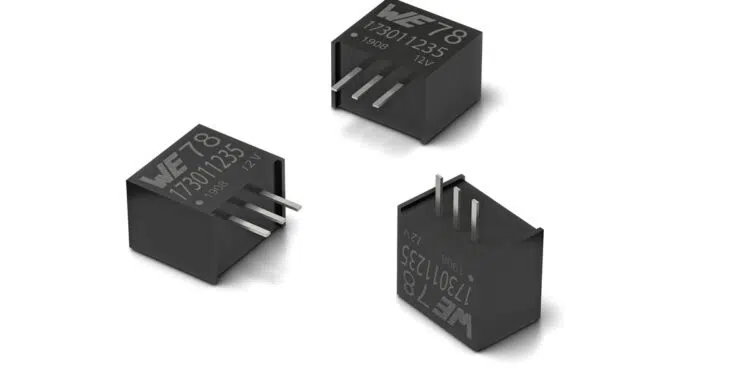The range of MagI³C-FDSM power modules with 36 V input voltage has been expanded to include a version with 12 V output voltage.
The power module in a SIP-3 package represents a cost-effective solution to meet the requirements for the real-world voltage transients of a 24 V industrial power architecture. The new module operates from 16 to 36 VIN and generates a fixed output voltage of 12 V with current up to 1 A.
The FDSM series MagI³C power modules are fully integrated DC/DC voltage converters with a fixed output voltage. The modules incorporate all of the components needed, like the controller, inductor and input/output capacitors, with the added benefit of thermal overload and short circuit protection. Since there are no external components required for operation, there is essentially no circuit design needed. This reduces development costs and makes it possible to get to market quickly with new applications. This power module has around 95% efficiency while the linear regulator will have an efficiency of 50%. The standard THT housing for easy mounting is pin-compatible with L78x linear controllers.
Pre-compliance testing has shown both the radiated and conducted emissions on an evaluation board are below the limits of EMC standards EN55032/CISPR32 Class B.






























